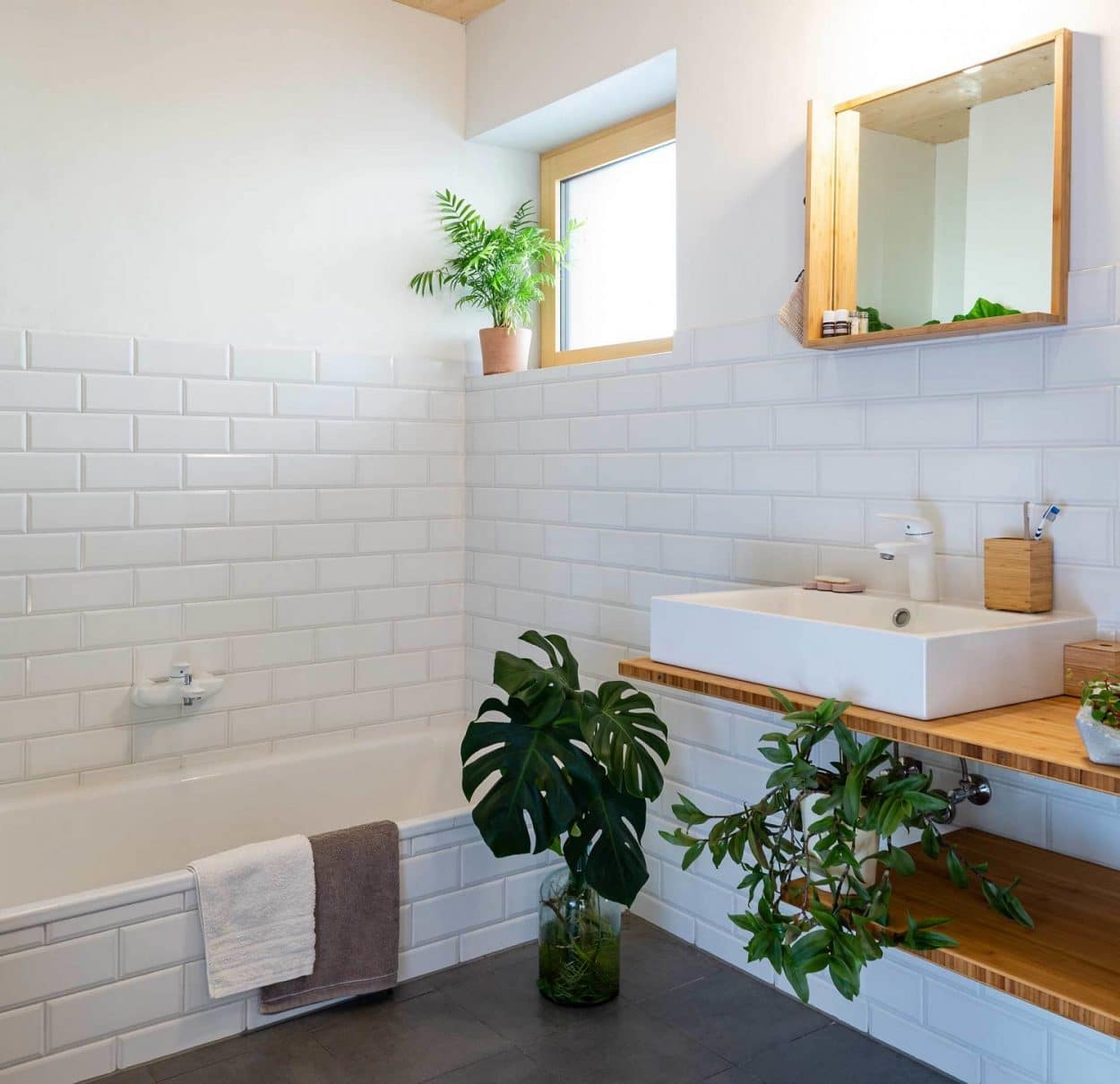Andrea Hörndler and Hannes Wizany run a blog to offer advice to future home builders called “Place to be”. Through their own eco-house project in Austria, they’ve found ceramic tiles to be a positive contribution to ecological building.
Andrea Hörndler and Hannes Wizany from Austria report on their experiences of building their eco-home in their blog, “Place to be“. They chose a plot of land near Linz, well-integrated into nature but close enough to the city and fixed a goal to build a home no more than 100m², the maximum size for an ecological residential building in their opinion.
“I believe that once you start thinking about your personal consumer behavior, it’s hard to close your eyes. It starts with little things, like cosmetics or food, and extends to building a house. That’s also why we started asking ourselves how we actually want to live, what we really need, and how we can realize it in a sustainable manner,” Andrea Hörndler said, as stated in a press release.
“Access to information on the subject of ecological building, or sustainable alternatives in the building industry in general, is extremely arduous”, Hörndler said, as stated in a press release. “We have therefore tried to document everything as well as possible, and to provide insights into our house via our blog.”
Situated on the steep hillside plot, the eco-house is built on stilts made largely of wood. In order to avoid sealing the ground, Hörndler and Wizany deliberately decided against building a basement. A support structure made of recycled steel carries the house and makes it look like a floating box. The wood used comes from sustainable Austrian forestry, the insulation is made of straw blown in after the wheat harvest, and in the interior, building panels made of straw, clay slabs, and clay plaster provide a climate-regulating effect. They examined how to create an eco-house in every detail of the construction, including the interior.
Ceramic Tiles Support Healthy Indoor Climate
The couple found it very difficult to design an eco-friendly bathroom because it is impossible to do so without waterproofing, among other challenges; however, with guidance, they came across the District series by Agrob Buchtal and came to the conclusion that ceramic tiles not only looked good but could contribute to the ecological building.
Such tiles meet ecological criteria because they’re made from natural raw materials with clay as the main component. Additionally, in the sum of their properties, ceramic tiles are one of the most sustainable floor and wall coverings of all. Almost all Agrob Buchtal tiles come with the innovative Hytect surface, providing special additional benefits: an antibacterial effect without chemicals, a neutralizer of unpleasant odors and air pollutants, and an extremely easy to clean surface.
The effect of Hytect is based on the principle of photocatalysis. For this purpose, titanium dioxide is durably baked into the glaze of the ceramic tiles as a “catalyst” which, when exposed to light, affects a reaction between light, oxygen, and air humidity. In this way, active oxygen is formed which, on the one hand, eliminates unpleasant odors and air pollutants including formaldehyde, tobacco, kitchen fumes, and typical WC odors. On the other hand, the active oxygen decomposes and inhibits the growth of microorganisms such as bacteria, mold, algae, moss, and germs without chemical substances.
The ceramic tiles provided with Hytect coating are also hydrophilic – i.e. water-friendly – and are therefore particularly easy to clean. Instead of forming drops, the water spreads evenly as a thin, flat film on the tile. The advantage: dirt is washed down by the water film and can then be easily removed. Hytect thus significantly reduces the use of cleaning agents and protects the environment.
Furthermore, the photocatalytic effect of Hytect does not wear off but rather is activated again and again by light alone. Normal room lighting is sufficient for this purpose.
Technical sheet:
Official project name: Ourplacetobe
Location: Linz, Austria
Project completion date: 2019
Name of the collection: District
Material: Ceramic tiles
Size: 10 x 25 & 5 x 10 cm
Colors: White (+grey floor tiles)
Product launch date: 2018
















